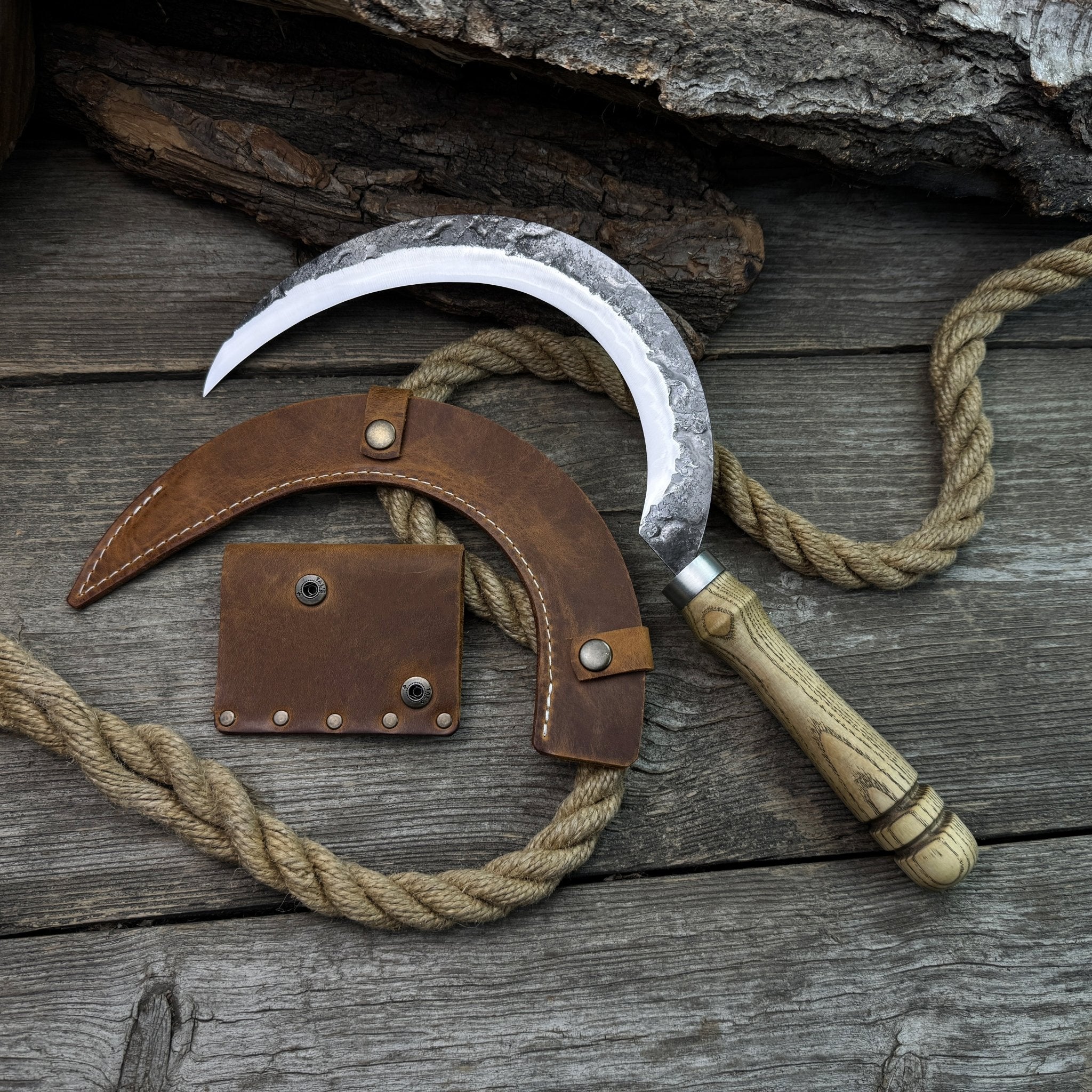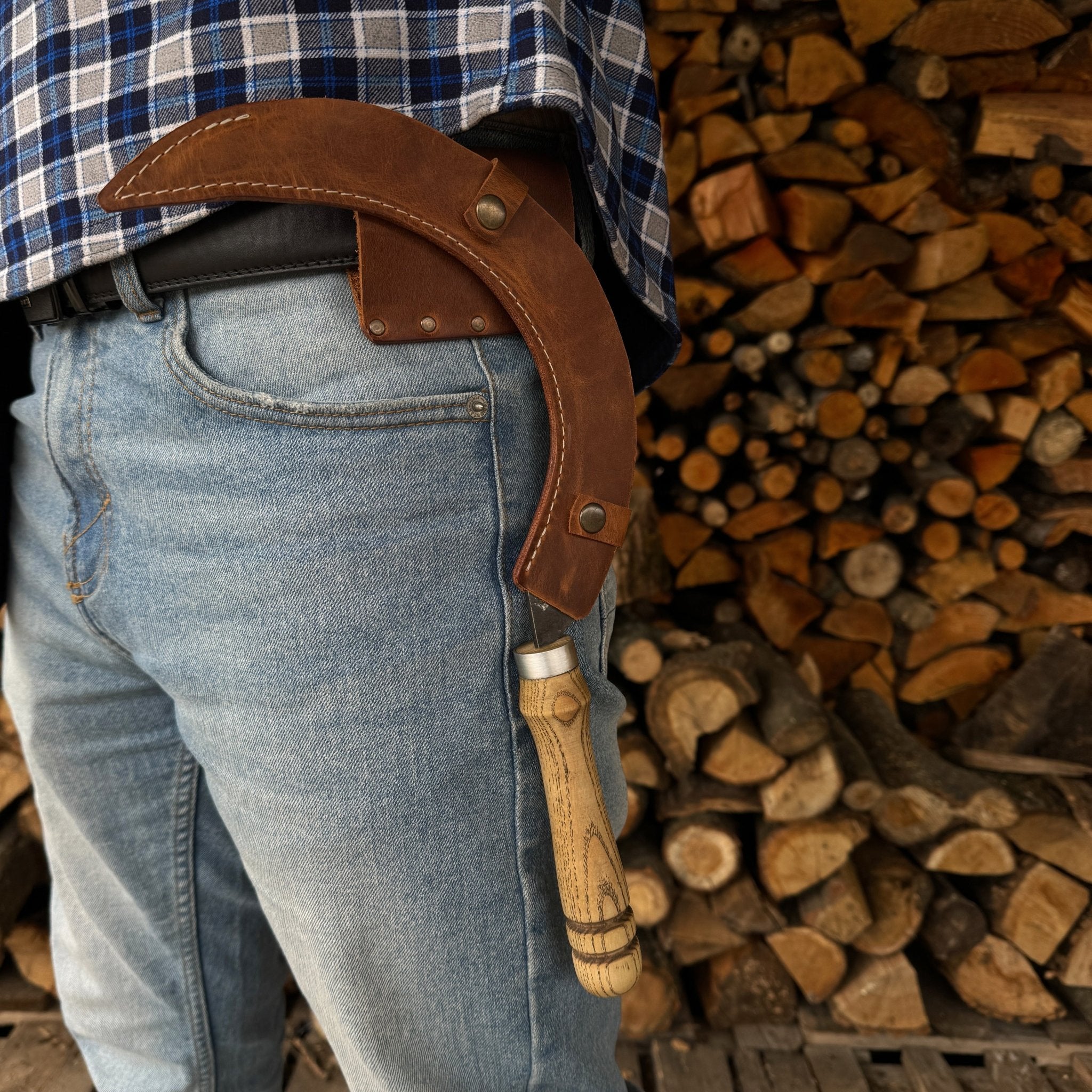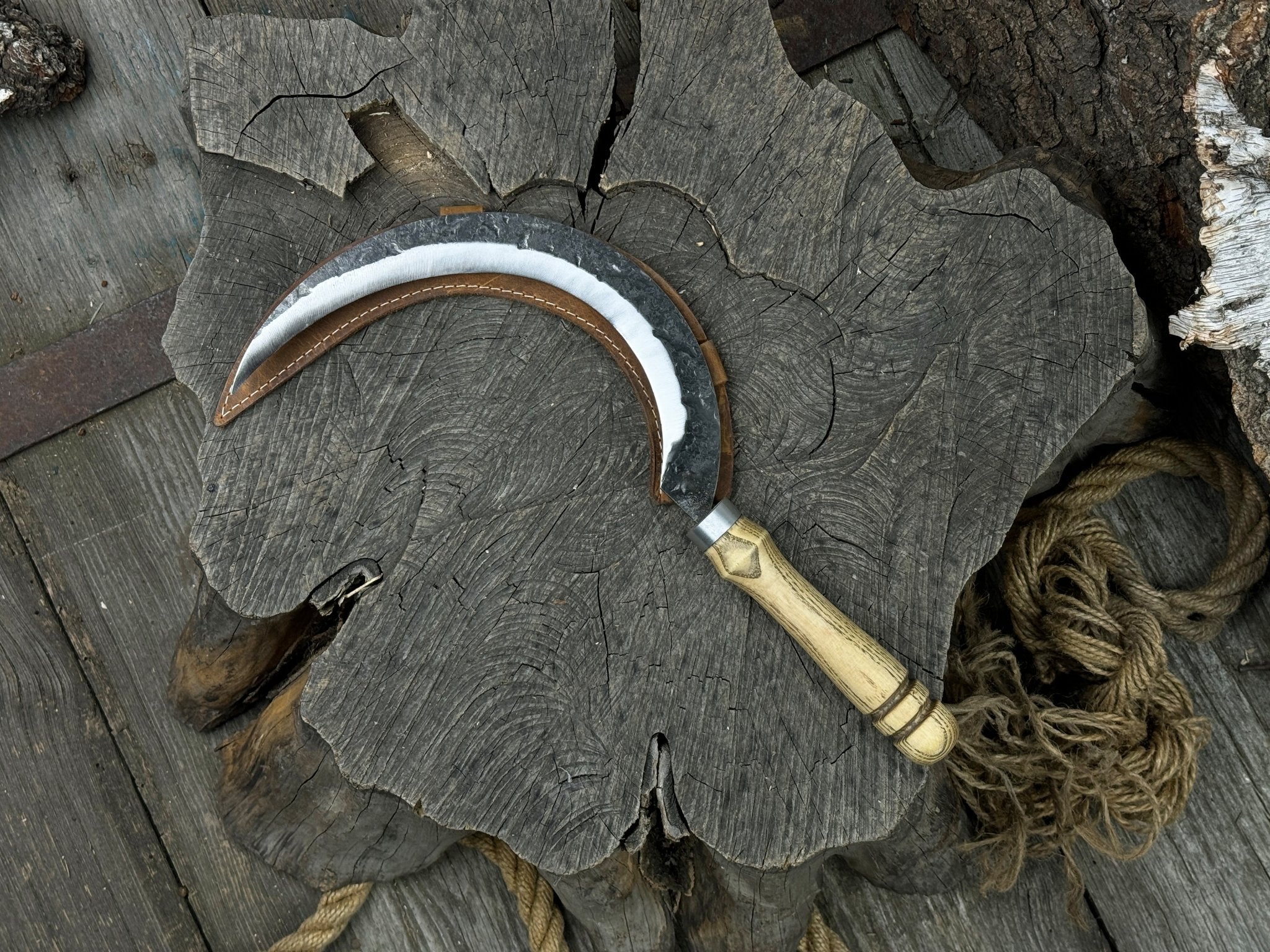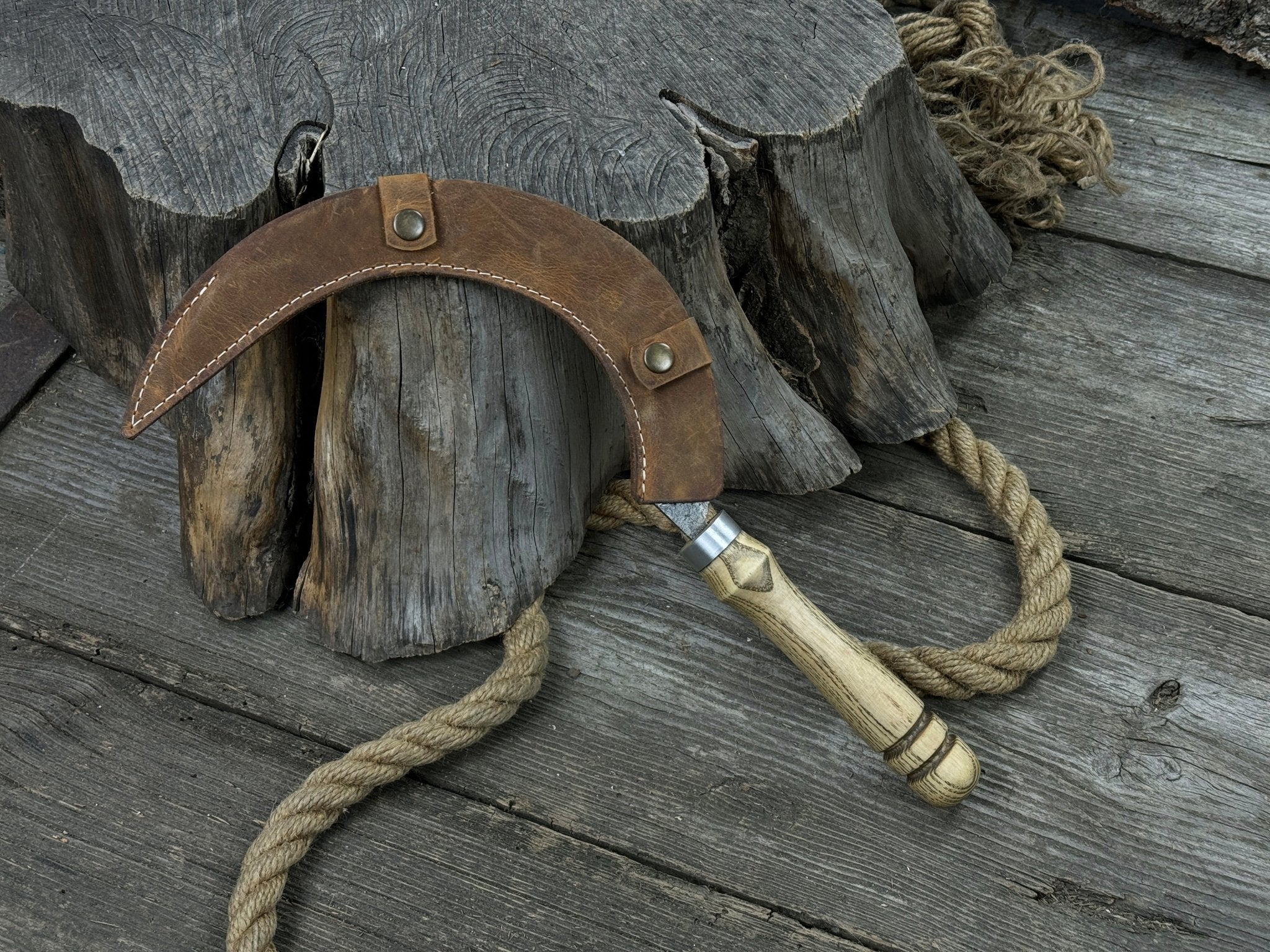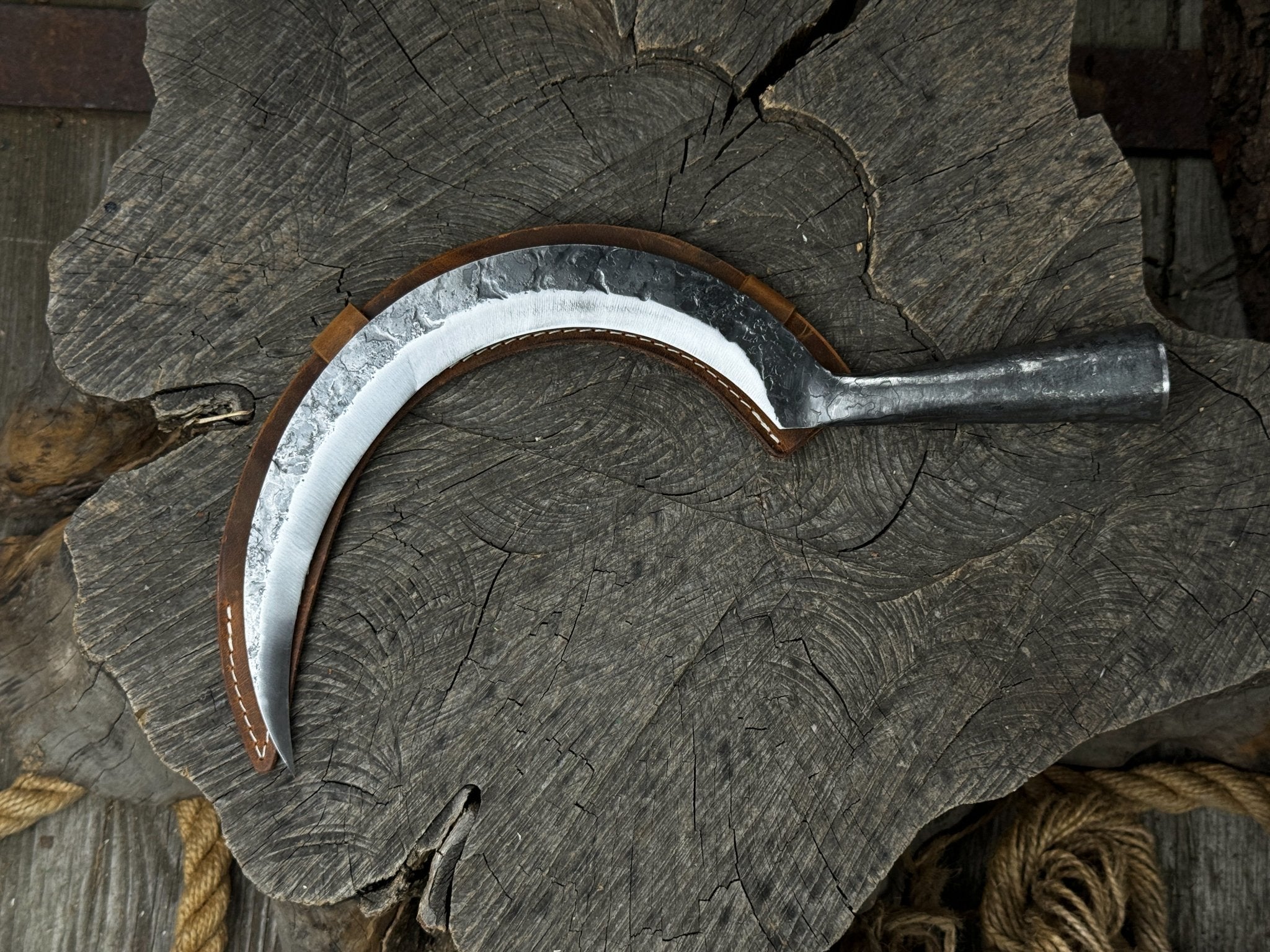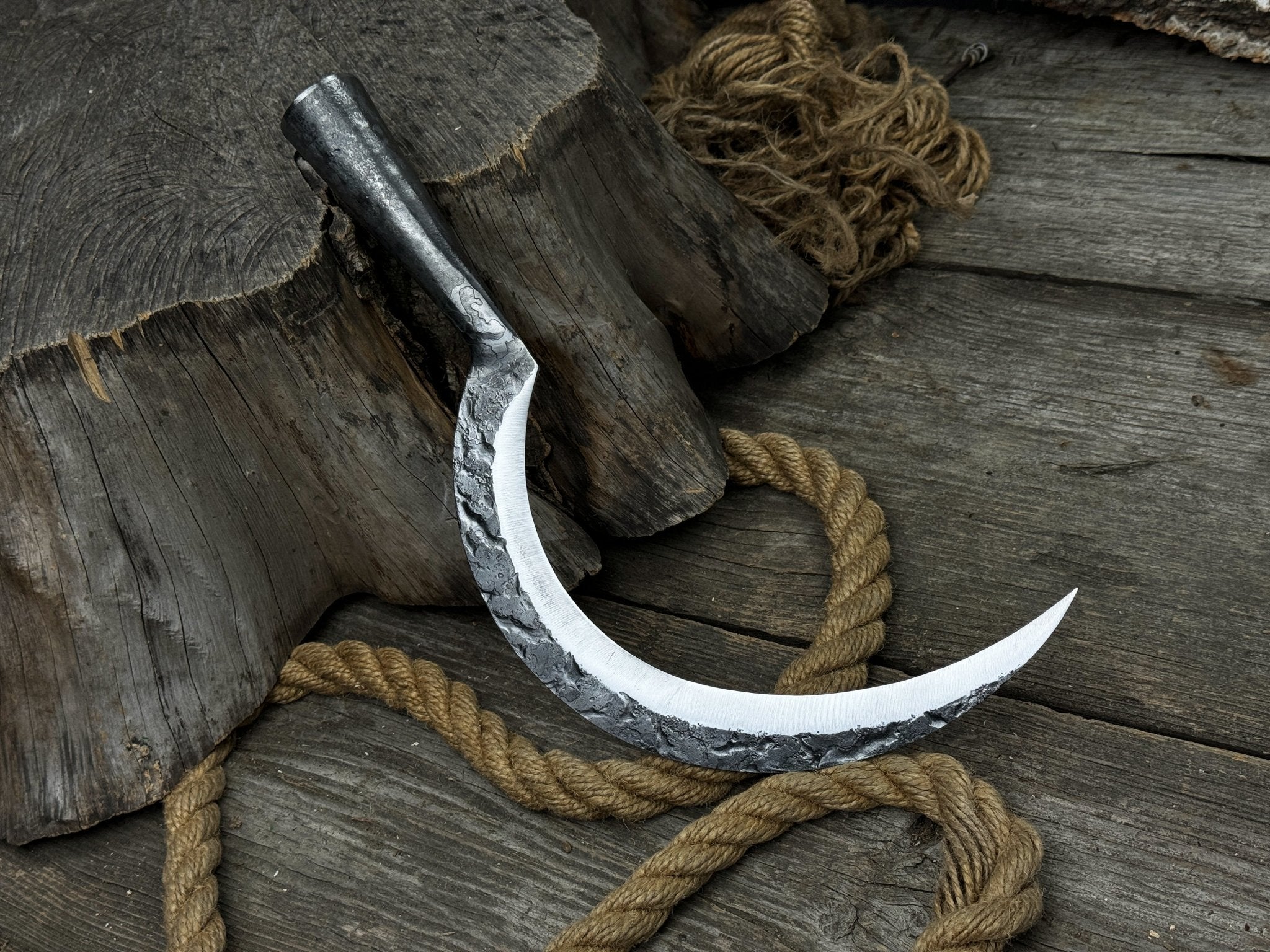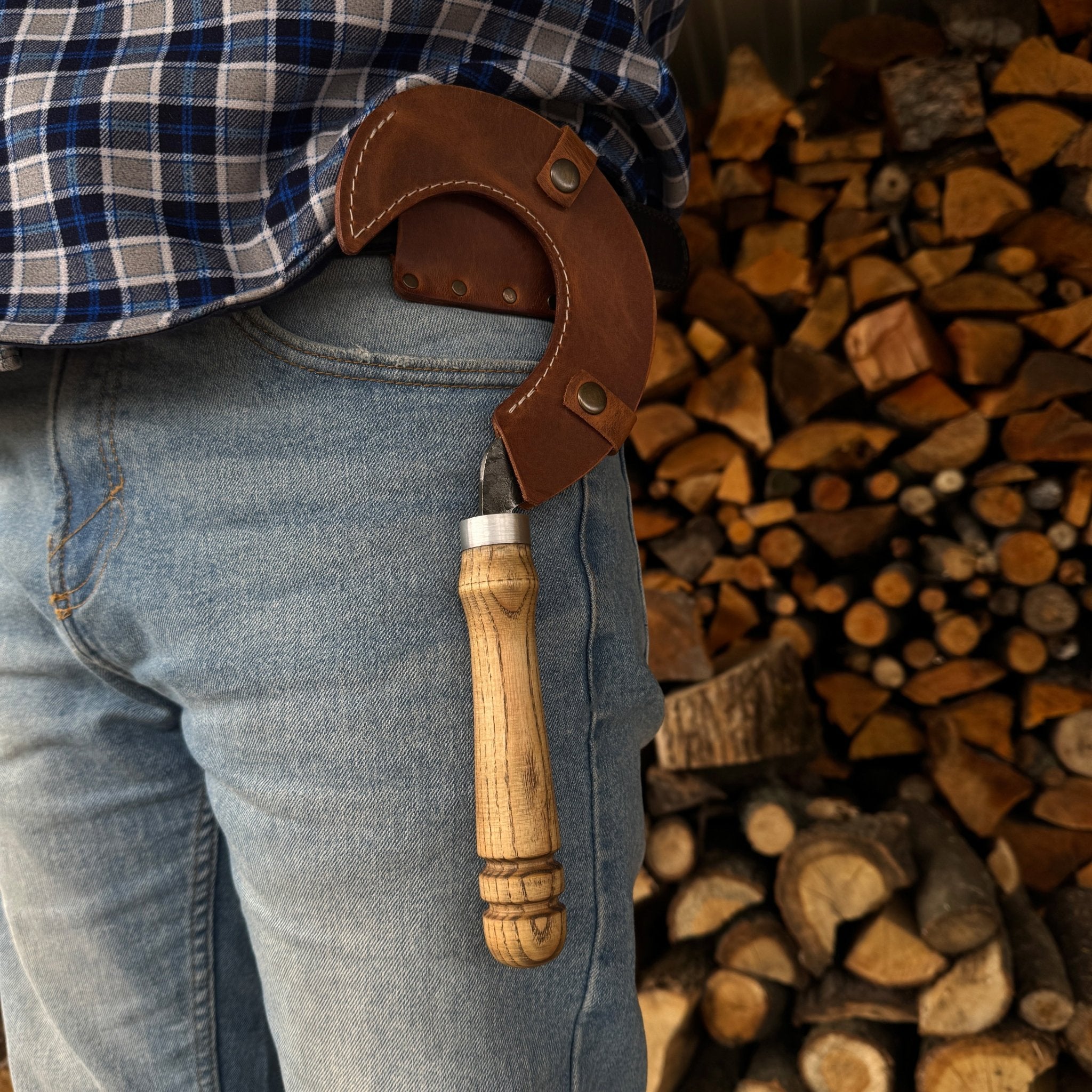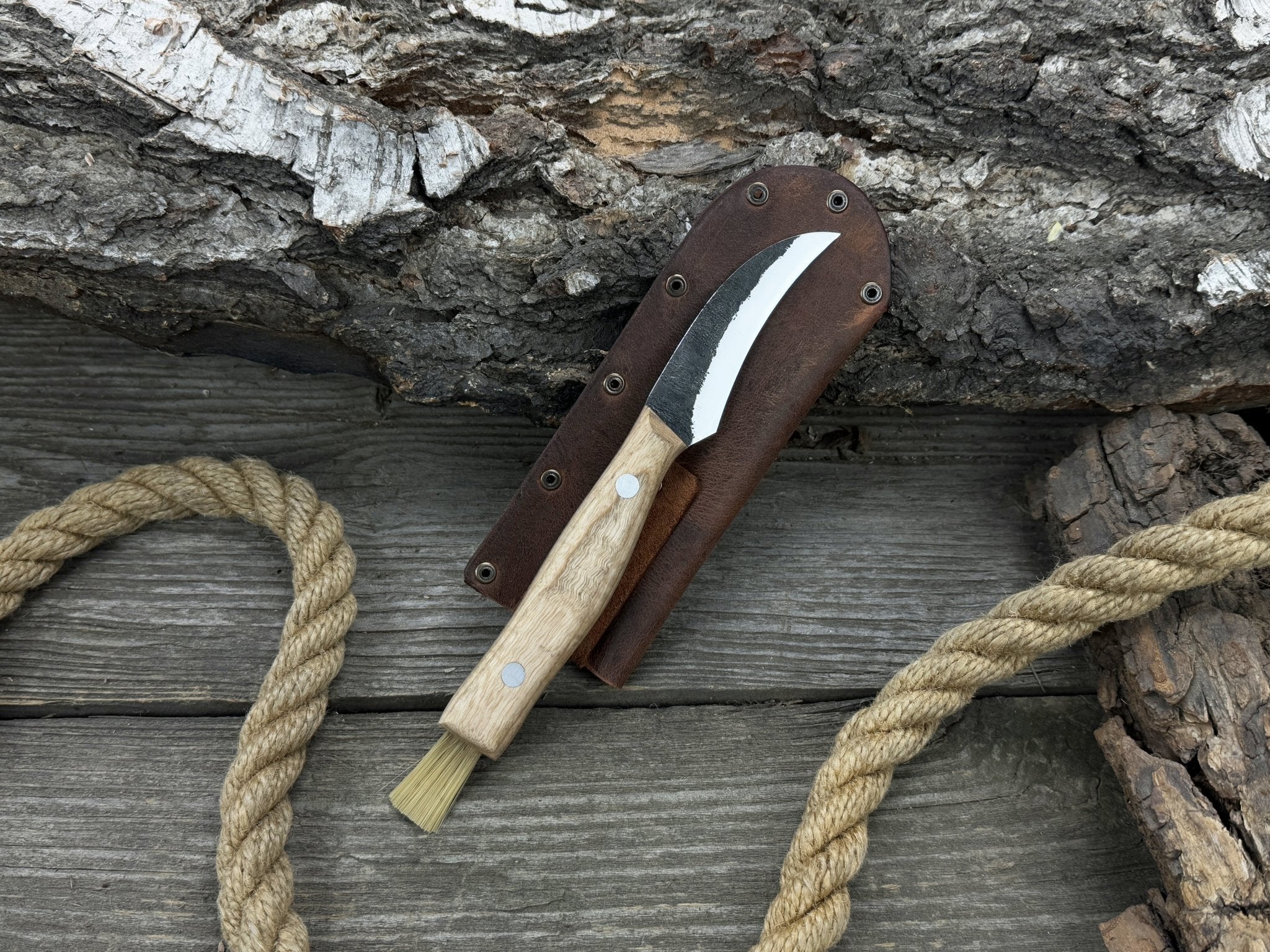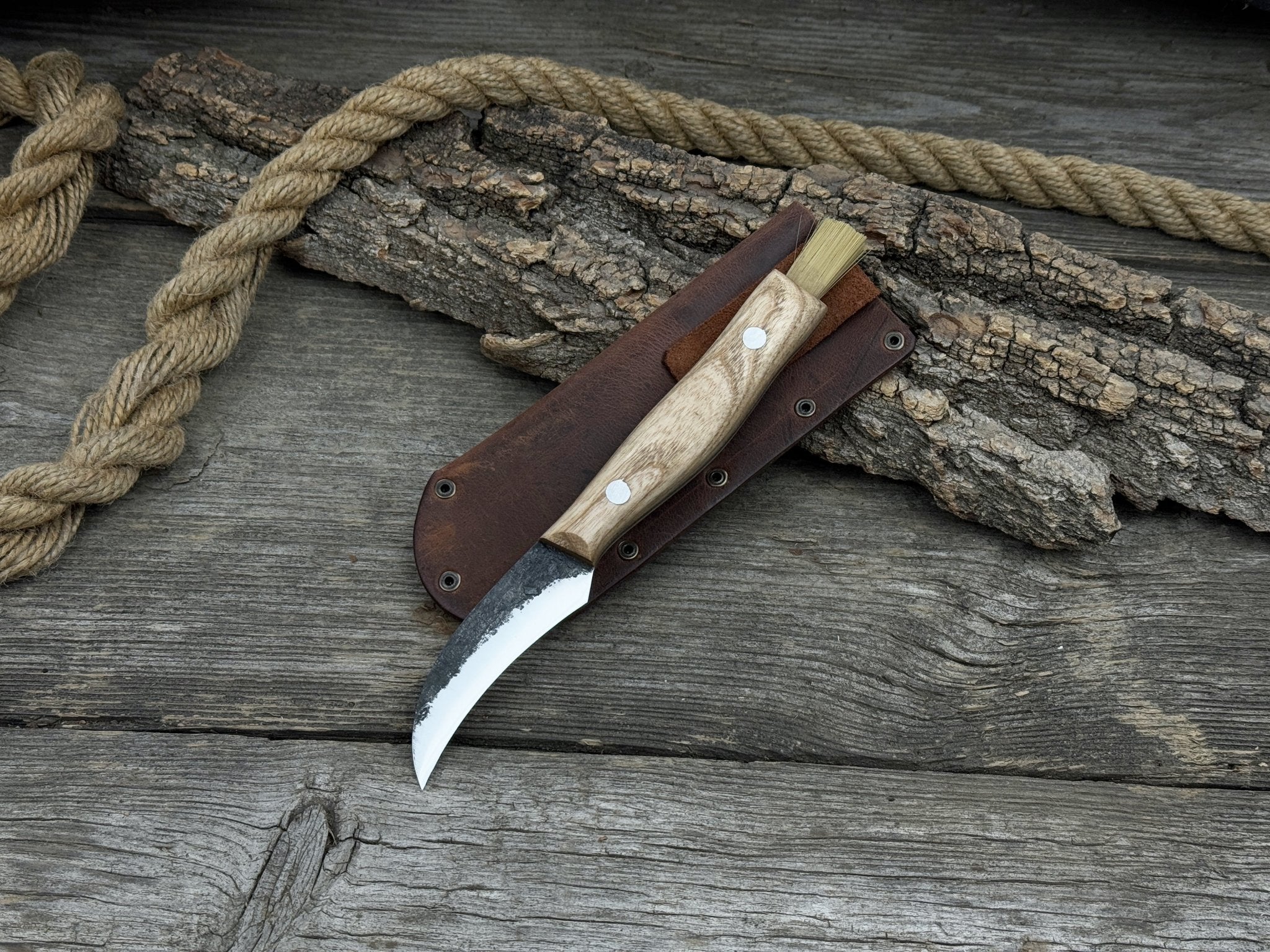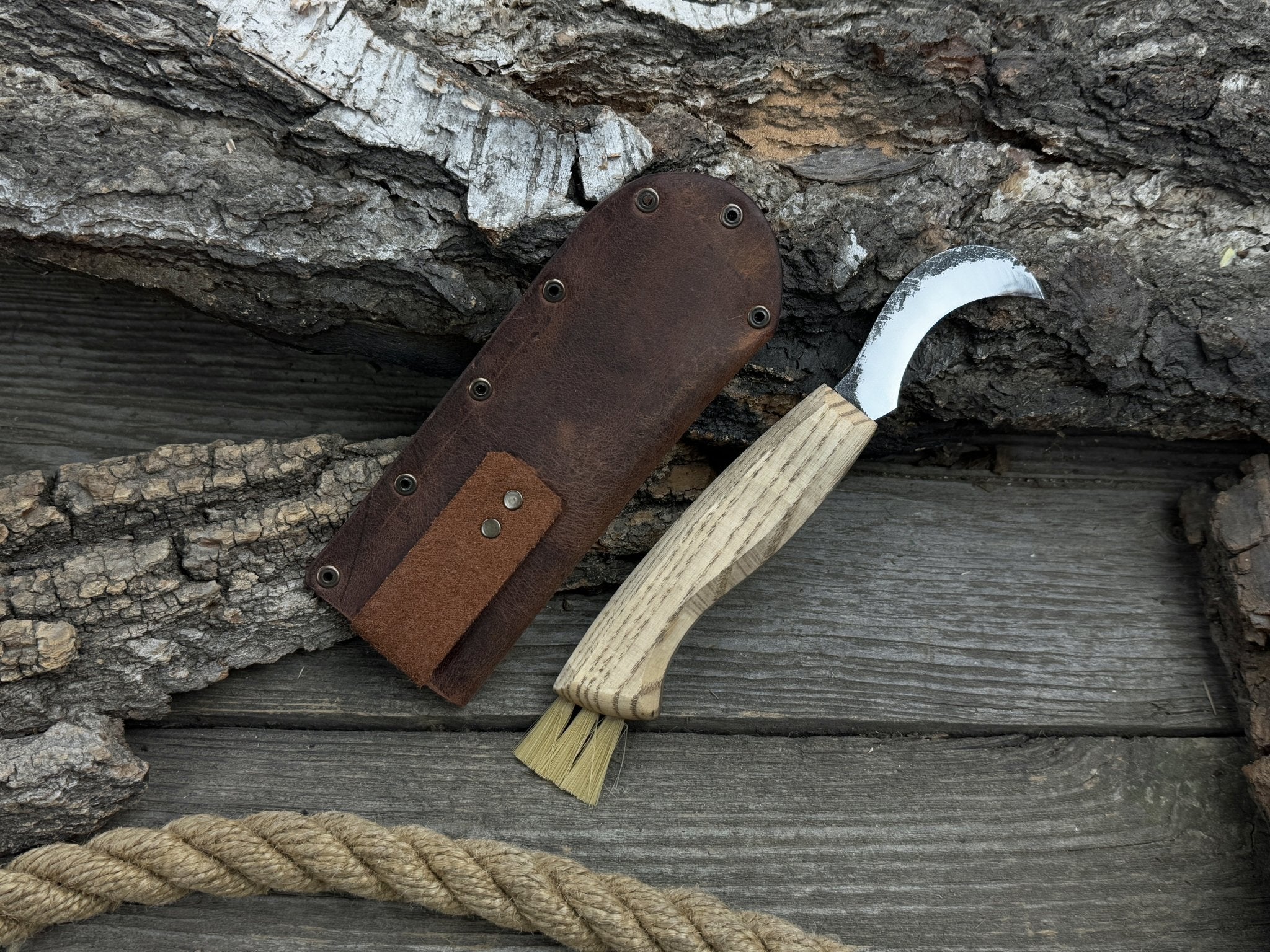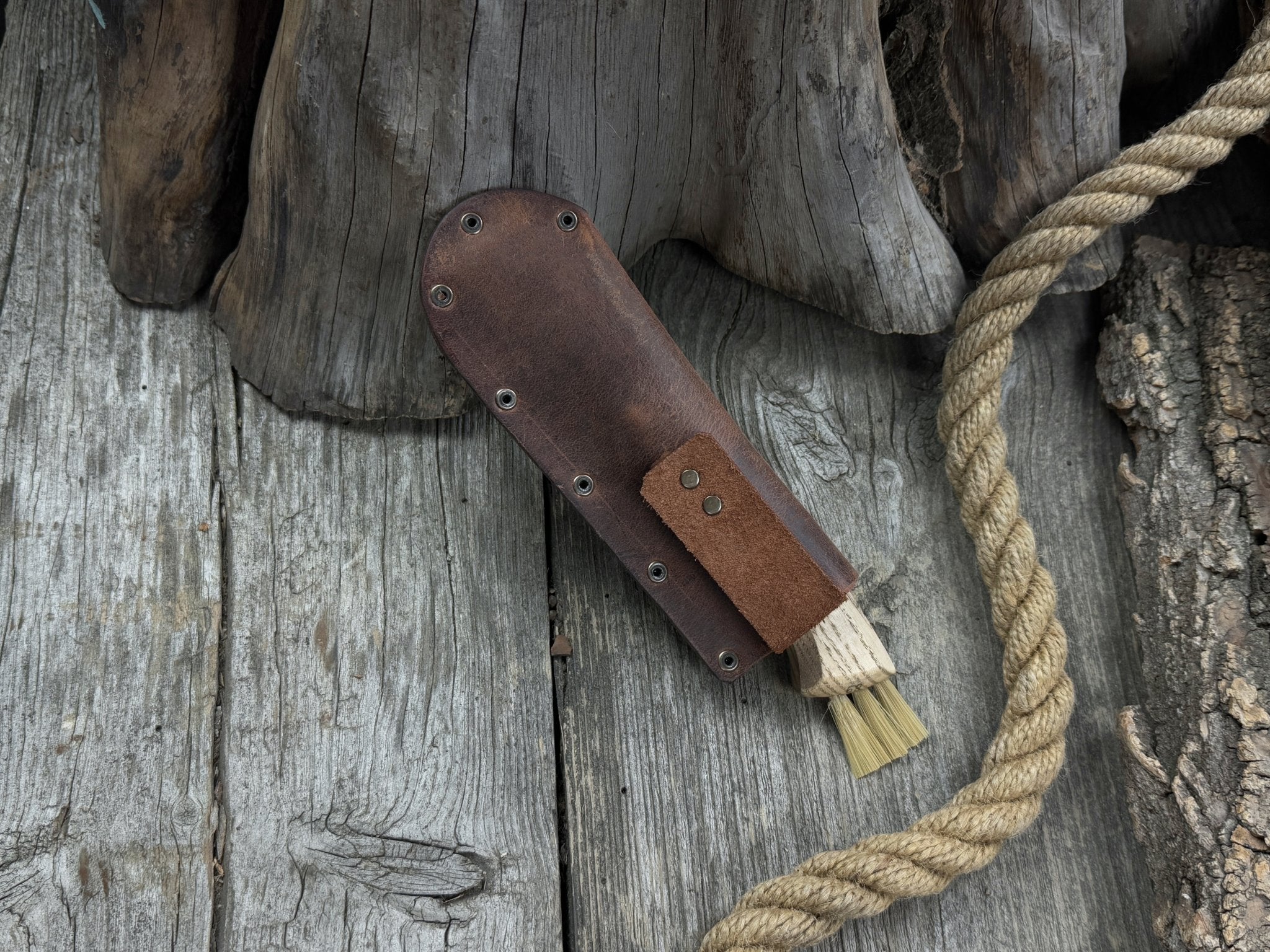Hand-Forged Large Sickle, ⌀19 cm (7.5 inches) Blade, Leather Belt Attachment
Hand-Forged Large Sickle, ⌀19 cm (7.5 inches)
Hand-Forged Large Sickle, ⌀19 cm (7.5 inches)
Hand-Forged Small Sickle – 9 cm (3.54 inches) Blade with Leather Belt Attachment
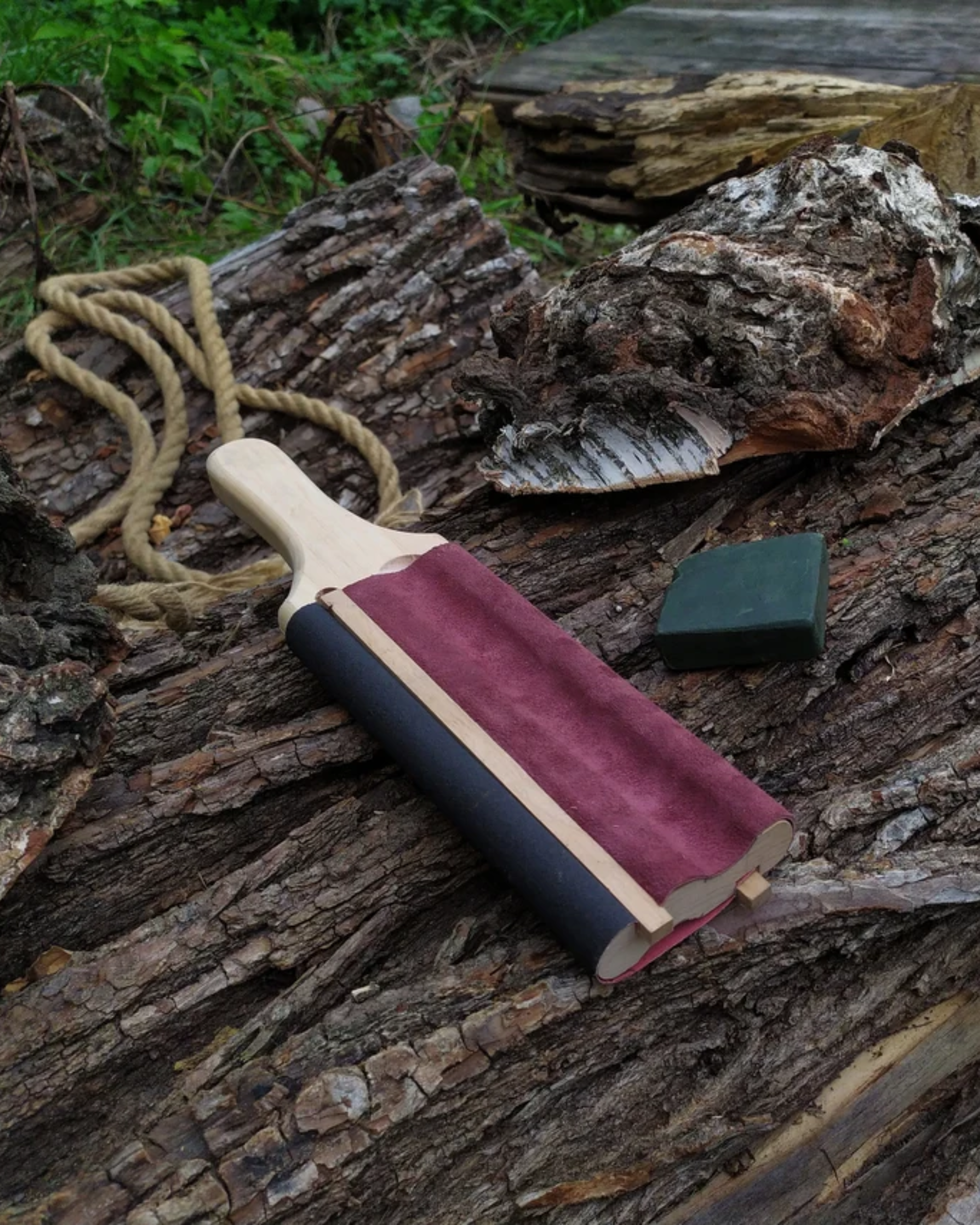
Hand-Forged Small Sickle, ⌀9 cm (3.54 inches)
Small Sickle with Forged Handle, 9 cm (3.54 inches)
Purpose of Gardening Hand Tools
How Garden Hand Sickles and Scythes Improve Efficiency and Reduce Environmental Impact
If you are looking for alternatives to gasoline-powered equipment for gardening, consider gardening hand tools like sickles and scythes. They allow for cutting of weeds and grass in tight spaces and around delicate plants, handling different types of vegetation.
Sickles offer more control when harvesting to selectively avoid unwanted weeds and manage multi-cropping. Scythes, on the other hand, allow for faster harvesting over larger areas with less physical strain. This set of tools is generally better suited for small-scale farming, making them a preferred choice over machines like lawnmowers or weed whackers due to their ecological benefits, cost-efficiency, and lack of noise pollution.
Modern hand tools for gardening are lightweight and ergonomic, simplifying their use and enhancing their efficiency.
Benefits for Soil and Plant Health
With sickles and scythes, there is no need for chemical herbicides that can harm soil. Undesired vegetation can be removed before it seeds and spreads. Hand garden tools cut gently, leaving soil microorganisms intact, which is essential for plant health and the nutrient cycle.
Soil microorganisms improve nutrient availability for plants, enhancing their growth and resilience. This, in turn, ensures a better soil structure, water retention, and root penetration.
Disturbing the soil can disrupt the microbial habitat and reduce the population of useful microorganisms (bacteria, fungi, etc.). With this garden tool set, you prevent this from happening.
What is a Garden Hand Sickle and How Does it Help in Gardening?
Key Features of Garden Hand Sickles
Versatility makes sickles essential hand tools for the garden. They can handle anything from harvesting crops to trimming shrubs. Here is a more detailed look at the hand sickle design:
- Materials: Sickle blades are often made from high-carbon or stainless steel. High-carbon steel is preferred for its excellent edge retention and durability, while stainless steel is valued for its rust and corrosion resistance.
- Types of Blade: Curved blade is the most common type, ideal for cutting thick grass and soft stems. Serrated blade features teeth along the edge, perfect for fibrous plants and wooden stems. Straight blade is often used for softer weeds and grass, offering precise, delicate cutting.
- Handle Design: Traditional garden hand tools usually feature wooden handles, offering a comfortable grip and good balance. Modern hand sickles may also have plastic or polypropylene handles, known for their durability and weather resistance.
- Key Uses: These small garden tools are the best when it comes to trimming overgrown grass without damaging delicate plants. Their sharp, curved blades effectively remove weeds around gardens and trees. Though harvesting with sickles requires hard work, these tools remain widely used for crop and herb harvesting in traditional farming. Serrated blade sickles help remove deadwood and tidy up shrubs.
Benefits for Common Gardening Tasks
Hand gardening tools like sickles offer high precision. For those who enjoy garden work, sickles are indispensable garden hand tools for efficiently cutting in hard-to-reach areas.
The versatility we mentioned earlier is another significant advantage. A single sickle, such as a Japanese sickle, can perform multiple tasks, from chopping down cover crops to harvesting plants.
Sickles are especially valued by gardeners who promote environmentally friendly practices.
Compared to power tools, sickles are relatively inexpensive. Made from durable materials, they can be a long-lasting and practical investment when properly maintained. To keep sickles in a good condition, follow these simple steps:
- Clean the sickle after each use by removing dirt from the blade and wiping it down with a cloth.
- Sharpen the flat blade side first, then move to the curved side before each use.
- Store the sickle in a dry place and apply a light coat of oil to the blade and handle to keep the steel and handle in good working order.
Selecting the Right Sickle for Your Garden Needs
When choosing a hand garden tool like a sickle, it is important to consider the specific gardening task, the material you are cutting, and how precise or versatile the tool needs to be.
Matching a Sickle to the Gardening Task:
- For grasses and weeds: Grass-cutting sickles with a short, curved blade rank among the best hand garden tools for simple garden maintenance and are effective for cuts close to the ground.
- For harvesting grains: A sickle with a sharper, narrower blade offers more control, allowing for precise cuts without damaging nearby stems or crops.
- For working with woody plants: Sickles with sturdier, heavier blades can handle tougher plants. Brush-clearing sickles are robust gardening hand tools designed for thicker vegetation.
Types of Sickles to Cut Close to the Ground:
These sickles typically feature long, flat curves to sweep horizontally along the ground and ensure clean cuts at the base of the plant. Some models may have steel handles for added strength, making them suited for heavy-duty garden work.
Sickles for High Precision:
- Japanese sickles: These have thinner, sharper blades with a shorter curve. Being lighter and more refined, they are highly maneuverable, cutting soft plants and grasses with accuracy.
- Harvesting sickles: Some models have more pronounced curves for cutting individual stems, ideal for harvesting crops like rice or herbs.
Universal vs. Specialized Sickles:
Universal sickles are usually of medium size, with a moderate curve to handle various gardening chores. This tool can be beneficial to those searching for a single hand garden tool for all tasks. Specialized sickles are designed for specific tasks. For example, a rice sickle with serrated edges is ideal for harvesting grains, while a machete-style sickle is better for clearing overgrown areas and woody plants.
What is a Scythe and Why You Might Need One for Your Garden?
Unique Features of a Quality Scythe
A quality scythe should have several unique features that make it invaluable for agricultural tasks and gardening:
- Handle: A well-designed snath (handle) should be made from durable materials like wood or metal and ergonomically shaped to absorb shock during use. Some modern scythes feature adjustable handles to suit the user’s height and comfort.
- Blade: Durable blades are often made from high-carbon steel, providing a sharp, long-lasting edge. The blade’s curvature maximizes cutting efficiency for grass, weeds, and crops. Some models of these garden hand tools have interchangeable blades for specific tasks. This feature can make the scythe a highly adaptable tool in your collection of hand tools for gardening.
- Balance and Weight: The balance and weight of a scythe influence user comfort and the overall effectiveness of the tool. Ideally, a scythe should weigh between 3 to 5 pounds (1.4-2.3 kg). Lightweight scythes are easier to control and are best suited for soft plants, while heavier scythes are more suitable for tougher cutting tasks like clearing dense brush.
Choosing a Scythe for Various Garden Sizes
Selecting the right scythe depends on the size of the garden:
- For Small Gardens (up to 500 sq ft):
A lightweight scythe with an 18-inch blade offers greater maneuverability and complements other gardening hand tools like shears and pruners. It is perfect for small weeds and light vegetation.
- For Medium Gardens (500-2,000 sq ft):
A slightly heavier scythe with a 24-inch blade is better for cutting larger areas of grass and offers versatility for trimming around bushes. This tool will fit well alongside your hand tools for landscaping.
- For Large Gardens (2,000-5,000 sq ft):
Select a scythe with a 28-inch blade. Its robust design makes it suitable for tackling dense and tall weeds.
- For Gardens with Mixed Terrain:
A scythe with a 20- to 26-inch blade could be the best choice. Look for models with ergonomic handles and adjustable designs, especially for uneven ground like hills. Adjustable designs also make it easier to cut around tree roots or slopes without straining your back.
- For Overgrown Gardens and Fields:
For heavy-duty tasks, choose a sturdy scythe with a reinforced steel handle and a blade approximately 30 inches long.
Conclusion
Incorporating hand garden tools like sickles and scythes into gardening and landscaping routine requires more effort, but at the same time they excel at managing tight areas without causing harm to the soil or delicate plants. These tools offer precision, durability, cost-effectiveness, and sustainability. By matching the tools to your tasks properly, you make a long-lasting investment and ensure a more enjoyable and productive gardening experience.
